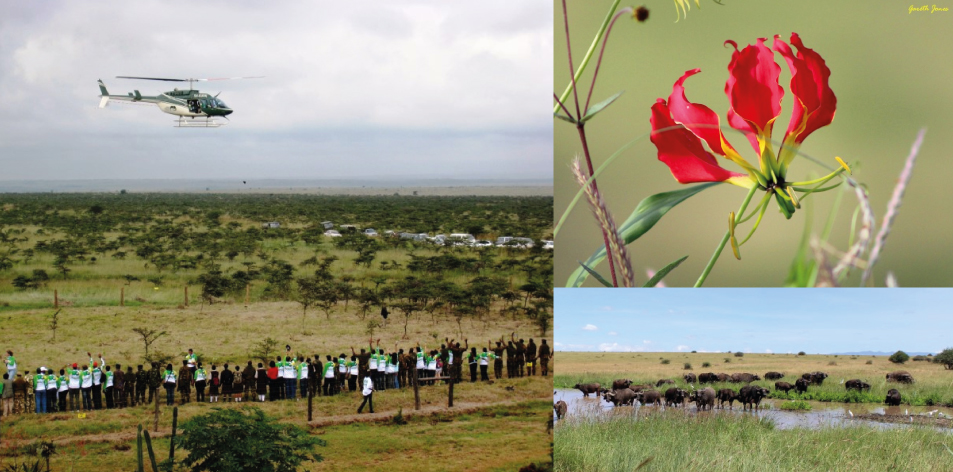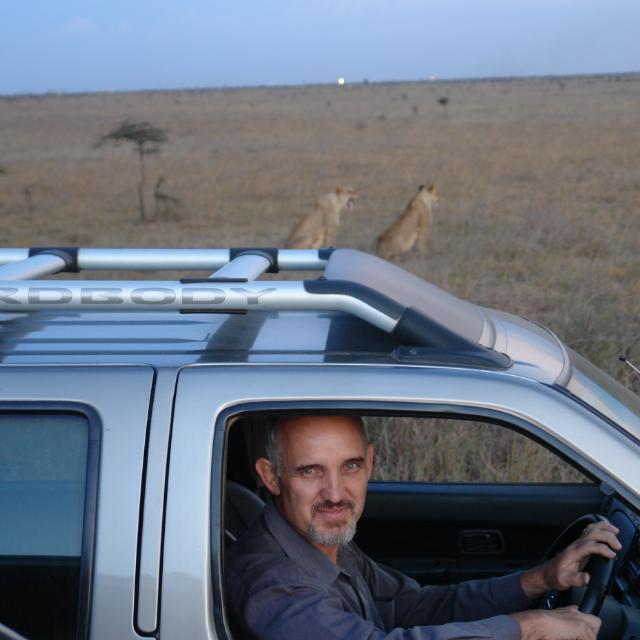
A Green Scene – Article by Gareth Jones
THE NAIROBI VEGETATION- A GREEN SCENE! – BY GARETH JONES
After some good rain, new life often blossoms in many ways. Flowers blossom with bright splashes of colour, standing out magnificently against the green surroundings, and the dry drab grasses erupt with new green growth. How beautiful forested areas are with many flowers, many bird species and magnificent trees, in a living green scene? Without trees the natural wonder we call the Nairobi National Park with many species, would not be here. Come to think of it, without the trees, none of this natural wonder would be here.
It was the late Anoop Shah who had a vision, and encouraged others to start the Nairobi Greenline Project to ensure that the boundaries of the Nairobi Park are protected with 250,000 trees from Nairobi to Athi River. The trees are now all planted in the form of 11 different indigenous species, and the process of “parenting the forest” is now ongoing with the support of KWS and the MPESA foundation. After nearly 9 years of “parenting the forest” some trees are doing quite well, and it is wonderful to see that the various species at the East gate have now been clearly marked with the names of the various species. However, it is also the sad current reality that large sections of the 50m wide 30km long Nairobi Greenline belt have already been destroyed by developments like the Southern Bypass, and with the current plans for the Embakazi Container depot access road, past the east gate and linking onto the Southern bypass just past the Ole Sereni hotel. This project will again destroy many of the greenline trees.
Trees still hold many secret treasures, and it is believed that the cures for many diseases will be found in the leaves of trees in the future. So now that all the “young trees” are in the ground, the next responsibility starts, to ‘parent the forest trees to maturity”. Just like in a family we nurture our children to grow up strong, so will this forest need plenty of loving care from people over the next few years. Especially activities such as watering in the dry season and weeding when needed. It is hoped that many more trees will be planted to replace those that were destroyed. I ask you all to remember Anoop Shah, and support the Nairobi Greenline Project by participating in planting trees or by merely visiting the Nairobi park.
A few years ago after some rains, as I drove slowly along through a forested section of the Nairobi Park, many flowers could be seen. Suddenly a spectacular flower appeared between two shrubs. The crimson curved red petals with golden splashes stood out magnificently against the green surroundings, it was indeed a gloriosa superba. How beautiful the forest is just after the rains, with the flowers, and many birds. It should be noted that there are also many species of flowering plants also found over the grasslands and along the water courses, it is really worth it to slow down and enjoy the flowers. In some places if you just switch off your vehicle, and sit quietly, you will hopefully become aware of the beautiful fragrances of the bush, while at the same time listening to our feathered friends as the birds sing a wonderful orchestra of melodies. This simple activity can be very therapeutic for those who practice it, and always allows us the opportunity to draw near to God.
We all need energy to survive in the world, wild animals who eat plant species can only survive and thrive if there is enough plant material, like grasses, leaves and stems to give them enough nutrition and energy to sustain them throughout the annual cycles of dry and wet seasons.
The total amount of potential food energy available in kilograms per square kilometer is measured, this known as the biomass. In the Nairobi National Park scientific studies have been conducted by people like (JB Voster and MJ Coe from 1960-1966) to determine the estimated sustainable biomass of the Nairobi National Park. In the dry season the biomass was estimated to be about 5690kg per sq/km and in the wet peak season it was as high as 12775 kg per sq/km.
Optimum biomass is also known as the carrying capacity, or the amount of species that can live in the park without downgrading the ecosystem. This is very important for the Park as the total area is only 117 sq/km and the herds are not able to migrate as before due to blocked seasonal routes. Certain species also have preference for particular plant species in their diet, so there are some parts of the park that have higher herbivore populations at times.
Herbivores like zebra, eland, wildebeest, coke’s hartebeest, impala and buffalo also attract predators when they prefer to feed in certain parts of the park. In my experience the Kingfisher area plains, Eland valley and the Athi basin are typical areas where the soil type is fertile and able to sustain larger populations of herbivores and associated predators like lions, leopards and Hyenas. So next time you decide to visit the park try focusing on the areas where the herbivores are feeding, and sooner or later you could be rewarded with a predator sighting.
To be able to enjoy the creation of God amongst “the green scene” always results in finding peace and rest, in a way our lives are like flowers in a forest, we bud,we blossom and we fade, let us live to the fullest while we can. Next time you visit the Nairobi National Park, it is worth driving to the East gate and spending a bit of time to see the green line in reality. So let us all “GO GREEN” where ever and whenever we can!
The park is open daily from 06h00 to 19h00.
Gallery
 Gareth Jones – Nairobi Park Dairy – A passionate writer & photographer
Gareth Jones – Nairobi Park Dairy – A passionate writer & photographer
